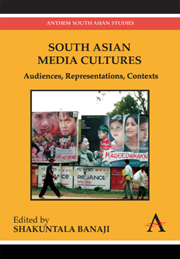Book contents
- Frontmatter
- Contents
- List of Illustrations
- 1 Introduction
- Part One Elaborating Audiences: Meaning, Use and Social Context
- Part Two Telling Texts: Media Discourse, Identity and Politics
- Part Three Alternative Producers: The Articulation of (New) Media, Politics and Civic Participation
- 11 Through the Lens of a ‘Branded Criminal’: The Politics of Marginal Cinema in India
- 12 Pakistani Students' Uses of New Media to Construct a Narrative of Dissent
- 13 Expanding the Art of the Possible: Leveraging Citizen Journalism and User Generated Content (USG) for Peace in Sri Lanka
- 14 Conclusion
- List of Contributors
13 - Expanding the Art of the Possible: Leveraging Citizen Journalism and User Generated Content (USG) for Peace in Sri Lanka
from Part Three - Alternative Producers: The Articulation of (New) Media, Politics and Civic Participation
Published online by Cambridge University Press: 05 March 2012
- Frontmatter
- Contents
- List of Illustrations
- 1 Introduction
- Part One Elaborating Audiences: Meaning, Use and Social Context
- Part Two Telling Texts: Media Discourse, Identity and Politics
- Part Three Alternative Producers: The Articulation of (New) Media, Politics and Civic Participation
- 11 Through the Lens of a ‘Branded Criminal’: The Politics of Marginal Cinema in India
- 12 Pakistani Students' Uses of New Media to Construct a Narrative of Dissent
- 13 Expanding the Art of the Possible: Leveraging Citizen Journalism and User Generated Content (USG) for Peace in Sri Lanka
- 14 Conclusion
- List of Contributors
Summary
At first blush, the media in Sri Lanka is diverse and multilingual with distribution and consumption of traditional media (e.g. TV, radio, print) spread over the island. Further examination reveals serious and growing challenges to impartial, accurate and responsible journalism. Journalists themselves rarely adhere to professional standards and ethics, or are often violently coerced into supine, submissive agents of government propaganda. There is not a single newspaper in Sri Lanka that is in Sinhala and Tamil. Journalists themselves tend to be monolingual. Lack of access to the embattled North and East and the stereotypes of the other result in biased, unprofessional reporting that fuels war (Deshapriya and Hattotuwa 2003 and 2005). The overarching problems of a state riven by violent conflict, corruption, nepotism and the significant breakdown of democratic governance and human rights, especially in recent years, deeply inform the timbre of traditional media. It is a vicious symbiosis – traditional media is both shaped by and shapes a violent public imagination. The potential of web 2.0 and new media in general and citizen journalism, mobile phones and USG in particular (e.g. You Tube videos, blogs, SMS and mobile sites) suggests that content that critiques the status quo, authored by civil society, can play a constructive and increasingly significant role in peacebuilding and stronger democratic governance in Sri Lanka. Through the example of Groundviews, Sri Lanka's first citizen journalism website, this chapter will interrogate the potentials and pitfalls of web and Internet activism in a country where political violence is an everyday reality.
- Type
- Chapter
- Information
- South Asian Media CulturesAudiences, Representations, Contexts, pp. 235 - 254Publisher: Anthem PressPrint publication year: 2010



